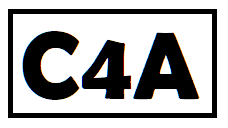Ohm’s Law Calculator: Simplify Electrical Circuit Calculations
Understanding Ohm’s Law
Ohm’s Law is a fundamental principle in electrical engineering that describes the relationship between voltage (\(V\)), current (\(I\)), and resistance (\(R\)) in an electrical circuit. The law states that the current through a conductor between two points is directly proportional to the voltage across the two points and inversely proportional to the resistance between them.
The Formula
The mathematical expression of Ohm’s Law is:
Where:
- \(V\) is the voltage in volts (V).
- \(I\) is the current in amperes (A).
- \(R\) is the resistance in ohms (Ω).
Using the Ohm’s Law Calculator

To use the Ohm’s Law Calculator, simply enter two of the three values (voltage, current, or resistance) and select their respective units. Click the “Calculate” button to determine the missing value.
Deriving the Formulas
From the basic formula \(V = I \times R\), we can derive the other two formulas:
- To find current (\(I\)) when voltage (\(V\)) and resistance (\(R\)) are known: \[ I = \frac{V}{R} \]
- To find resistance (\(R\)) when voltage (\(V\)) and current (\(I\)) are known: \[ R = \frac{V}{I} \]
Example 1
Suppose you have a circuit with a current of 2 amperes and a resistance of 5 ohms. To find the voltage:
Example 2
If you know the voltage is 12 volts and the resistance is 3 ohms, you can calculate the current:
Example 3
Given a voltage of 9 volts and a current of 3 milliamperes, you can find the resistance:
Complex Example with Unit Conversion
Consider a circuit where the voltage is 15 kilovolts (kV) and the current is 5 milliamperes (mA). Find the resistance.
Additional Example: Power Calculation
Power (\(P\)) in an electrical circuit can also be calculated using Ohm’s Law. The power dissipated in a resistor can be found using the following formulas:
For example, if the voltage is 12 volts and the current is 2 amperes, the power dissipated in the resistor is:
Alternatively, using the resistance \(R = \frac{V}{I} = \frac{12 \, \text{V}}{2 \, \text{A}} = 6 \, \Omega\):
\[ P = I^2 \times R = (2 \, \text{A})^2 \times 6 \, \Omega = 4 \, \text{A}^2 \times 6 \, \Omega = 24 \, \text{W} \] \[ P = \frac{V^2}{R} = \frac{(12 \, \text{V})^2}{6 \, \Omega} = \frac{144 \, \text{V}^2}{6 \, \Omega} = 24 \, \text{W} \]Practical Application: LED Circuit
Consider a simple LED circuit where an LED requires a forward voltage (\(V_f\)) of 2 volts and a current (\(I_f\)) of 20 milliamperes. To determine the required series resistor (\(R\)) to limit the current through the LED when connected to a 9-volt battery, follow these steps:
- Calculate the voltage drop across the resistor (\(V_R\)): \[ V_R = V_{\text{battery}} – V_f = 9 \, \text{V} – 2 \, \text{V} = 7 \, \text{V} \]
- Convert the current to amperes: \[ I_f = 20 \, \text{mA} = 0.02 \, \text{A} \]
- Calculate the resistance using Ohm’s Law: \[ R = \frac{V_R}{I_f} = \frac{7 \, \text{V}}{0.02 \, \text{A}} = 350 \, \Omega \]
A 350-ohm resistor would be suitable for this LED circuit.
Applications of Ohm’s Law
Ohm’s Law is widely used in various applications, including:
- Designing and analyzing electrical circuits.
- Calculating power consumption in devices.
- Troubleshooting electrical issues.
- Determining the appropriate components for a circuit.
- Ensuring safety in electrical systems by preventing overcurrent conditions.
- Optimizing energy efficiency in electronic devices.
- Understanding and designing analog and digital circuits.
Conclusion
Mastering Ohm’s Law is crucial for anyone working with electricity and electronics. The Ohm’s Law Calculator simplifies the process of calculating voltage, current, and resistance, making it easier to understand and apply this fundamental principle. Whether you’re a student, hobbyist, or professional, having a solid grasp of Ohm’s Law is essential for designing and troubleshooting electrical circuits. By understanding the relationships between voltage, current, and resistance, you can build more efficient and reliable electrical systems.
Follow us on Facebook for more updates!
Contact us at office@calculator4all.com
